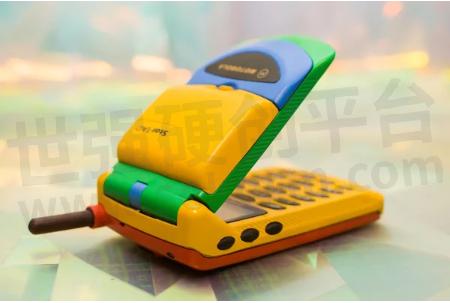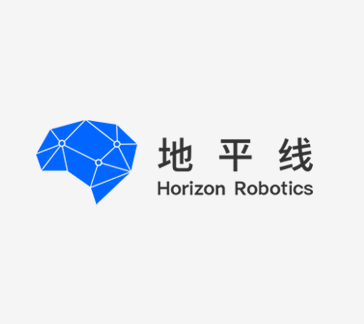Understanding Haptics: A Journey through the History and Evolution of Haptic Technology





In today’s digital age, haptics has become so deeply ingrained in our everyday lives that we often overlook its significance. The buzz of a smartphone notification or the rumble of a gaming controller has become second nature to us that we don’t even notice the sensation anymore. Until it’s not there that is. It’s now a fundamental part of our devices, just as important as visual and audio, and many companies have invested effort in creating immersive haptic experiences for their products.
Behind this seemingly simple interaction lies a rich history of technological innovation. If you’re new to haptics, we’ve compiled a simple primer about the different types of haptic motors, but if you’re interested in its fascinating history, keep reading—we trace its roots from its simple beginnings to the advanced technology we’re familiar with today.
Haptic Technology Takes Flight
The first applications of tactile feedback systems were seen in WWII-era aircrafts. Initially, the system was designed to stop the control stick from vibrating when the aircraft was on the verge of stalling. However, researchers quickly discovered that this feedback was beneficial for pilots in identifying safe maneuvers. As a result, they developed a haptic feedback system that would simulate the vibration feedback when the aircraft was about to stall, which allowed pilots to be aware of an impending stall while still maintaining control of the aircraft.

Haptic feedback systems were first applied in WW2 planes. The image above does not represent the exact plane model. Image Source: 247 Wall St.
In the 1960s, Paul Bach-y-Rita, an American neuroscientist, invented a vision replacement system using a 20×20 array of metal rods that could be adjusted to create tactile “dots”, similar to screen pixels. In 1973, Thomas D. Shannon was awarded the first US patent for a tactile telephone. Additionally, A. Michael Noll, an American engineer at Bell Telephone Laboratories, developed an early tactile human-machine communication system, for which he received a patent in 1975.
The Eve of Mainstream Haptics
Nowadays, haptics is almost ubiquitous with video games, allowing another dimension of interaction beyond just sight and sound. The first more mainstream application of haptics was in 1978, when Sega’s Moto-cross incorporated haptic feedback when the bike crashed or hit the rough on the side of the road. And although Sega was the first to introduce a haptic feedback system in a video game, Nintendo holds the distinction of creating the first video game controller with a vibration feature with the “RumblePak”, which they released in 1997 as a haptic add-on to the controllers of their N64 console.

Poster of Moto-cross by Sega. Image source: Ultimate History of Video Games

An N64 RumblePak. Image source: Wikipedia
Around the same period, the first haptic phone was also designed. In 1996, Motorola introduced the StarTac, the first phone in the world with a vibrating feature. The device utilized “Vibracall” to provide haptic feedback, notifying users of incoming calls through a buzzing sensation in their pocket. This was the initial version of the now-common vibrating alerts in our smartphones.

Lesser-known haptic devices designed during this time period include the Aura Interactor vest—a wearable force-feedback device that monitors an audio signal and converts bass sound waves into vibrations through electromagnetic actuator technology—and the PHANToM (Personal HAptic iNTerface Mechanism) system, which featured computerized arms ending in thimble-like receptacles where a person could insert their fingers and virtually “touch” and “feel” an object displayed on a computer screen.
The Next Generation of Tactile Technology
Today, haptic technology is increasingly prevalent in our digital devices, found in smartphones and gaming controllers to cars, wearable devices, robotics, and medical equipment. It’s unusual to come across a smartphone or a gaming controller without haptics—it’s now considered a standard feature.
Haptic technology has also contributed to advancements in safety and accessibility technology. For instance, haptic steering wheels and seats in cars aid in providing drivers with crucial information on the road, and can inform drivers via tactile cues about immediate dangers around them. Haptics also allows us to level the field for those with disabilities, giving them a new way to take in information without relying on sight and sound. For example, a smart, textile device can deliver haptic input to its end user, and aid those with limited vision or hearing to navigate complex situations in real-time.
Haptics also play a crucial role in applications such as touchscreens. The emergence of touchscreens led to the loss of physical buttons, and consequently, the tactile “feedback confirmation” that comes with pressing a button. But the use of surface haptics can restore this tactile confirmation, creating a seamless interaction between humans and computers.
Haptics has also found its place in Virtual Reality and Augmented Reality applications. The use of haptics in VR/XR allows for a more immersive experience, supplementing sight and sound with a tactile dimension, further blurring the worlds between the digital and the physical.
Haptics has become an integral part of our digital experience. Most excitedly, the field has immense untapped potential: as human-computer interaction becomes more prevalent, the need for a more intuitive user experience intensifies. We can only wait and see what the future holds for the haptics industry.
- |
- +1 赞 0
- 收藏
- 评论 0
本文由wenxia转载自TITAN Haptics Official website,原文标题为:Understanding Haptics: A Journey through the History and Evolution of Haptic Technology,本站所有转载文章系出于传递更多信息之目的,且明确注明来源,不希望被转载的媒体或个人可与我们联系,我们将立即进行删除处理。
相关推荐
Do You Know the Application of Hall Effect Sensors on Smartphones?
These general-purpose sensors have a wide range of applications, among which Hall-effect sensors in mobile phones and other mobile devices can be used to detect flip covers that are usually equipped with magnets.
Why Do Cars Need Electrical Wiring Harnesses? What Are Their Functions?
The wiring harness is an integral component of a vehicle, despite its massive size averaging around 4 meters in length, comprised of tens of thousands of tiny indivisible components. These components include but are not limited to safety airbags, ABS brakes, signal lights, and essential engine parts. The wiring harness undertakes the task of connecting and powering these functions, without which they would fail to operate correctly. Hence, understanding the functions and importance of automotive wiring harnesses is crucial.
How to Choose a Combat Robotics Battery?
When it comes to building a combat robot, one of the most critical components to consider is the battery. The right battery can significantly impact your robot’s performance, longevity, and safety during intense battles. This article will guide you through the key factors to consider when selecting a battery for your combat robot, ensuring you make an informed decision that aligns with your robot’s specifications and battle requirements.
【电机】TITAN HAPTICS Drake马达外观小巧轻便,振动力相比Carlton增强25% ∣视频
本视频介绍TITAN的Drake系列马达产品,采用TITAN专利的第二代线性磁悬浮技术,外观小巧轻便,尺寸更精巧、振动力相比Carlton增强25%、功率密度相比Carlton增加320%。
Shindengen Announcement of TO-277A Package for Large Current Support in Cars
Shindengen Electric Manufacturing Co., Ltd. (headquartered in Otemachi, Chiyoda-ku) launched sales for the small TO-277A (JEDEC name) package that can handle large currents in cars.
【电机】TITAN HAPTICS首款DRAKE触觉马达,以微小体积实现强大冲击力,提供高达320%功率密度及4.5克振动强度
DRAKE触觉马达系列开创了多项先河,每一款电机单元均采用全密封设计,并细分为四种不同性能版本:通用宽带型(MR),适用于音乐和低音震动反馈的低频共振版(LR),针对警报提示与纹理模拟优化的高频共振版(HF),以及专为生成锐利冲击触感而设计的LFi版本。
XELA Robotics Demonstrates Latest Tactile Sensors at ICRA 2024 in Yokohama
XELA Robotics had a successful exhibition at the International Conference on Robotics and Automation (ICRA) 2024 in Yokohama. XELA Robotics showcased their latest technology in tactile sensing and AI integration for robotics, drawing significant interest from attendees to the tactile sensor demonstrations.
【电机】TITAN HAPTICS采用固态磁悬浮技术的马达Carlton系列,尺寸大至15*34.3mm ∣视频
本视频介绍了TITAN的carlton系列马达,Carlton系列是TITAN尺寸最大,重量最重,冲击峰值和标准峰值加速度都最强的一款标准品。
TITAN Haptics采用最新触觉技术以实现绝佳性能和用户体验,优化产品设计和提高市场竞争力
在这个由技术驱动的科技创新时代,需要不断与各种电子设备互动。触觉肯定会成为我们未来生活和工作的重要部分,并且把虚拟世界从视觉扩展到触觉体验。TITAN Haptics的目标之一是积极分享更多触觉技术、信息和资源,促进其融入日常生活。
Melexis Sheds Light on Robotics and Mobility Technology at electronica 2024
Tessenderlo, Belgium, 5 September 2024 – Melexis, a global supplier of micro-electronic semiconductor solutions, is set to showcase its latest innovations at electronica 2024 (B4.540), the premier event for electronic components, systems, applications, and solutions.
【电气】TITAN Haptics推出首款触觉马达TacHammer DRAKE,4.5Grms振动,体积小,威力大
2022年3月30日——获奖的触觉科技初创企业TITAN Haptics今天宣布推出其TITAN Haptics品牌下的首款触觉马达TacHammer DRAKE,这是一款新型的、紧凑的、大小如胶囊的宽带触觉马达。适用于游戏、虚拟现实和音乐,TITAN Haptics最小、功率密度最高的宽带触觉马达提供10-300 Hz频率响应和4.5Grms振动。
Automotive chip supplier Horizon Robotics receives strategic investment from Chery Automobile
Horizon Robotics announced that it has received a strategic investment from Chinese auto manufacturer Chery Automobile and has completed the funding settlement. The funds will be used for the R&D and mass production of Horizon Robotics’ new smart automotive chips.
What is the timeline of the XELA Robotics?
The company was founded in August 2018 as a spin-out from Waseda University. With several patents pending, more than 50 customers from 4 continents, and 73 years of combined experience in both tactile sensing hardware and tactile AI, XELA Robotics is at the forefront of tactile sensing technology. We are a hardware and software company specialised in tactile sensing technology, established to provide the human sense of touch to robots. In addition to providing our tactile sensors, XELA Robotics also specialises in integrating them into various robot hands and grippers.
电子商城



































































































































































































登录 | 立即注册
提交评论